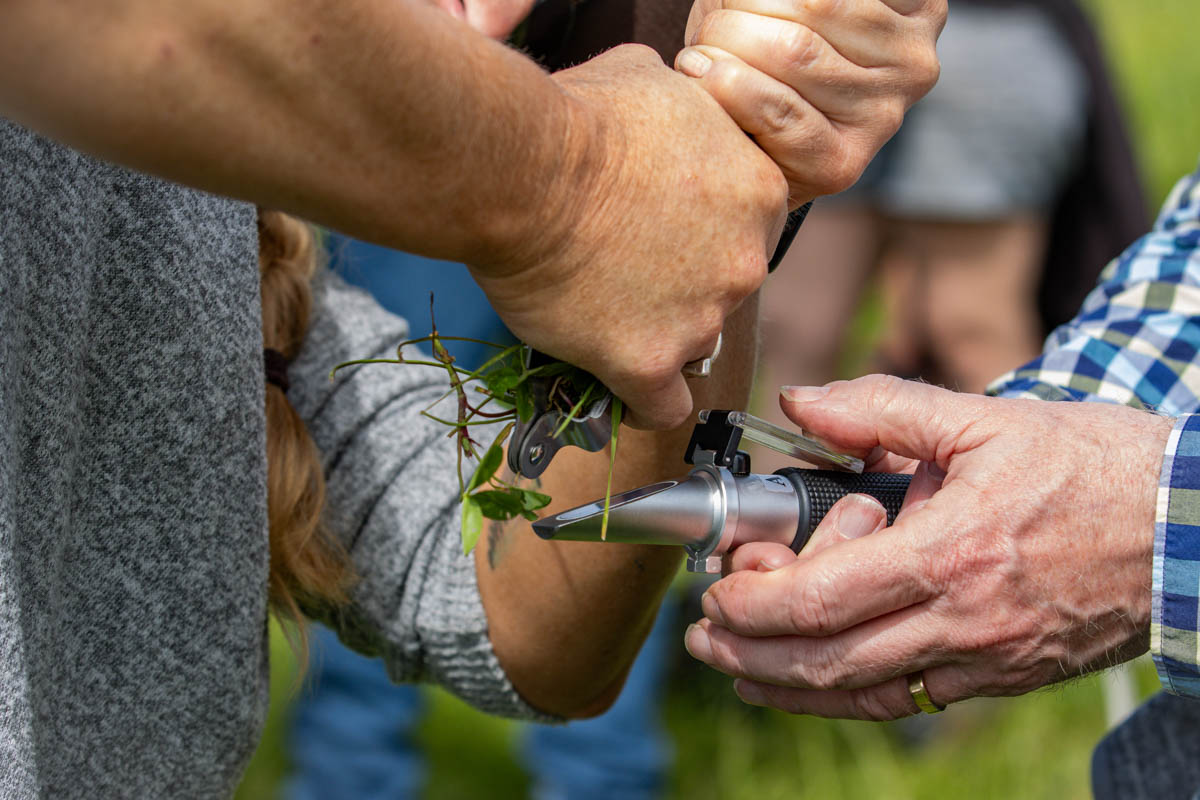Words by: Jackie Harrigan
Two years into a Sustainable Farming Fund project the results are looking promising for the innovative drainage management technologies employed on two Rangitikei farms with artificial drainage.
The project has investigated how the nitrates present in drainage water could be attenuated (lessened or reduced) through controlling the drainage and the drainage water. More than 2.5 million hectares of New Zealand farmland is artificially drained, being both a challenge (providing a short circuit to surface waters for pollutants) and also an opportunity (for farmers to lower the water table and maximise growth for pastures and crops).
Reducing the time of the drainage water spent in the soil profile, however, reduces the time for subsurface denitrification, when the bacteria in the soil convert water-soluble nitrate into harmless nitrogen gas.
GROUNDWATER MONITORING
The first part of the trial work has been monitoring the shallow groundwater to investigate the extent of nitrate denitrification. Sampling water from tubes and screens set into the soil was sampled at levels 1-2.5 metres below the soil surface, 2-3m below the surface and 3.4-4.4m below the soil surface.
Analysis of the water for nitrates and dissolved oxygen has shown that nitrate levels dropped from around 9ppm to less than 1ppm between 1m below the surface down to 3.5m below soil surface – showing that more denitrification is happening at the lower levels and nitrates are not flowing into deeper groundwater. Where dissolved oxygen is low this means that the microbes are working, eating the carbon and splitting the O2 out of the nitrate and releasing the nitrogen as gaseous N into the atmosphere. A Further PhD project will investigate if there are ways of further enhancing denitrification in groundwater?
CONTROLLED DRAINAGE
Controlling the speed of water in surface drains can slow the movement of surface water, holding the water in the soil profile making it accessible for plants and allowing more time for natural denitrification. Alternatively speeding up drainage removes more water to facilitate field operations.
Putting in a weir and mechanism to speed up or stop the drainage in 2019, the trials have tested the nitrate levels in uncontrolled drainage water at 11g/cubic metre NO3-N and the water from the controlled drain at 1.41g/cu m NO3-N, proving that denitrification is enhanced by intercepting H2O and slowing the movement of it through the soil profile to drains.
Massey University associate professor of soil science Dave Horne estimated with a simple control structure costing $1000, the 52kg mitigated across 3ha related to 15-20kg/ha at a cost of $3-6/kg N for the refurbishment, compared with $50-100/kg N for other mitigation options.
“Controlling the drainage is very effective, very cheap and very simple, with other advantages of holding up drainage in the soil profile having the effect of reducing the need for irrigation.”
WOODCHIP BIOREACTOR
The third piece of the drainage water puzzle has the water from the drain cycling through a woodchip bioreactor built in the paddock.
The 90m3 bioreactor is working successfully and is expected to reduce the NO3 load from 4mg NO3-N/l of drainage water at the inlet down to 0.6mg NO3-N/l at the outlet while travelling through the bioreactor at 1.5-2l/sec.
“The expected N load reduction over a nine month period is expected to come out at 100-150kg N/year when we get results of that,” Massey University associate professor Ranvir Singh said.
Combining the suite of techniques with the profile leaching effect, controlled drainage and the bioreactor will reduce N load to less than 0.5mg NO3-N/l, which is close to the natural level, Singh said.
The bioreactor has an expected life span of 10-15 years before the chip is broken down and composted and no longer processing the NO3.
COLLABORATIVE RESEARCH
“Research is ongoing in other parts of the country to look at how to make the bioreactor more efficient in the winter – can we load more carbon into the system, is there an optimum size of woodchip to use, is the N removal affected by temperature?” Singh says.
The research group are also developing calculators to determine optimum bioreactor size and flow rates.
The project has one more year to run and the results are showing that controlled drainage techniques could be a great N loss mitigation for artificially drained farms.
NEXT STEPS
A 150m3 bioreactor is to be built and monitored on Andrew Hardie and Helen Long’s Te Maunga dairy farm near Dannevirke. The bioreactor will process drainage water from a 65ha section of the farm including runoff from farm races. Te Maunga is a sensitive environment, bordered by both the Manawatu and Maungatewainui rivers. The Hardies have used numerous strategies to minimise their N loss footprint, including milking OAD, dropping cow numbers, reducing N applied and using coated N products, moving from turnips to chicory, increasing the effluent pond area and being more strategic around when the effluent is applied to the 40-50ha effluent area, riparian planting and wetland areas. Andrew says they are excited about the possibilities of using bioreactors to further minimise their N loss.
“If this bioreactor works well we have three other areas of the 240ha milking platform that each drain through a point, potentially building a bioreactor on the end of each is a good mitigation option.”





